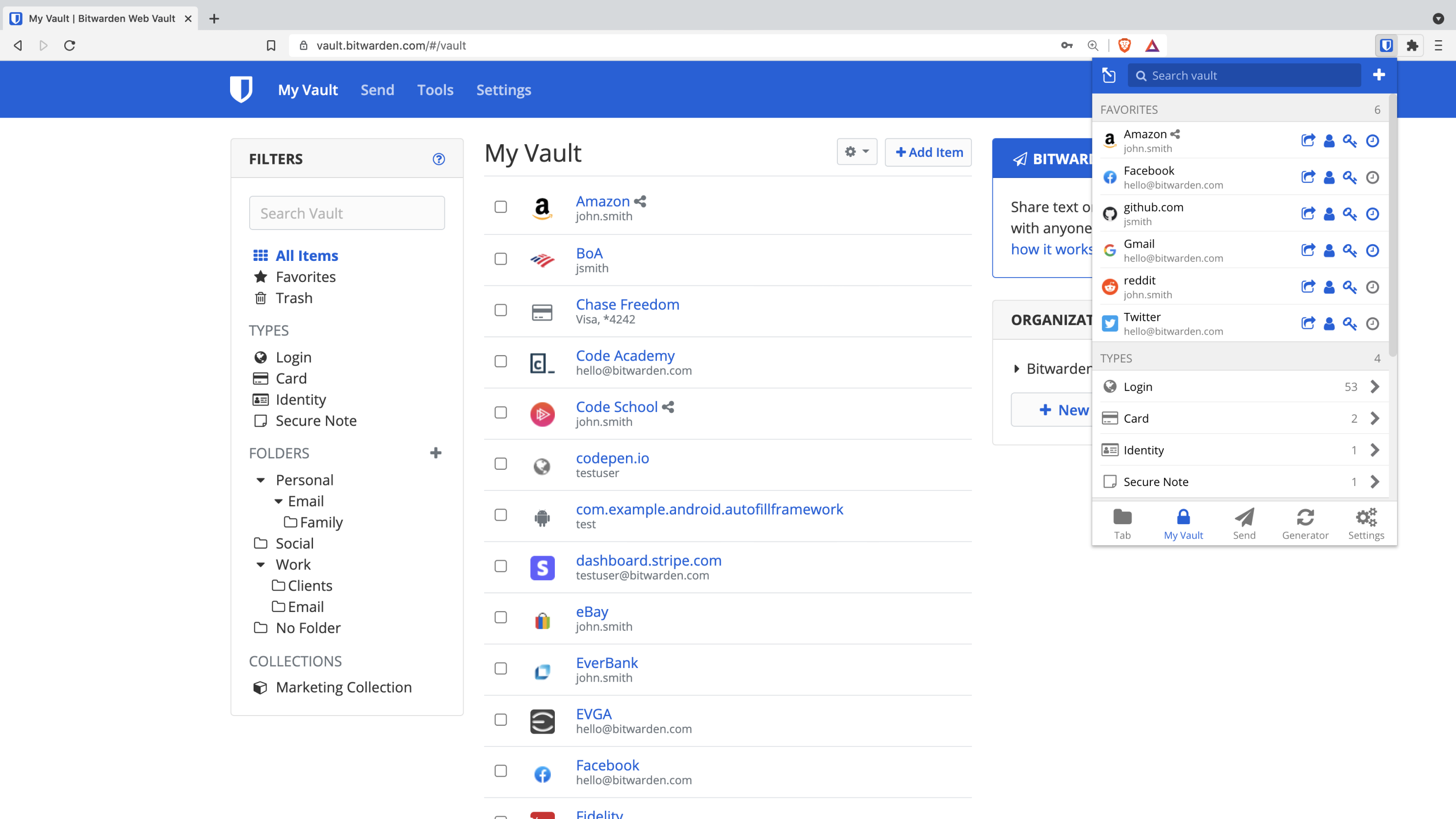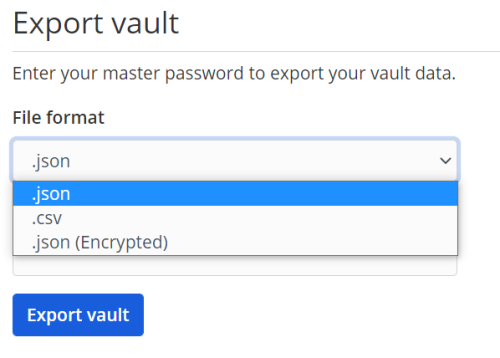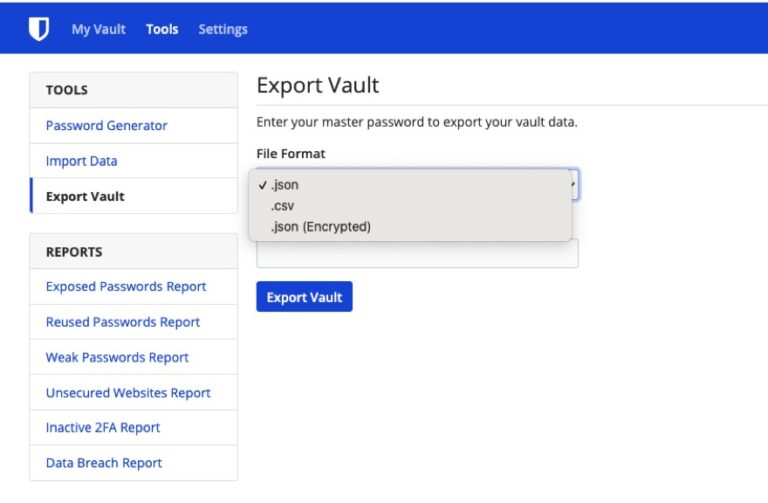

Go to your Bitwarden web vault, enter your Master Password and click on Submit.Īll your saved login and password information will be shown here. Step 3: Share password with the Organization Once the invited people have joined your organization, you can start sharing your passwords with them. Then specify their access control – whether to hide passwords or give them read-only authorization with the passwords in your collection. Now that the organization is ready, it’s time to invite people for sharing the passwords. On your Organization page, click on the Manage tab.Įnter the person’s email address and their user type. Step 2: Invite People to the Organization The folders within your Organization setup are called “Collections” and each collection can be customized differently depending on what access rights you want others to have over the shared passwords (read, write, or both). With free plans, you can have up to 2 users as part of the organization (including yourself). Once you’re inside your vault, click on New organization.Įnter your “Organization’s name”, the “billing email”, and then choose your plan. For this, go to your Bitwarden web vault, enter your Master Password and click Unlock. Sharing password on Bitwarden with more than three peopleįirst things first, create an organization.Step 3: Share password with the Organization.Step 2: Invite People to the Organization.

If you need assistance securing your password keeper, please contact SensCy. Make sure you only enter your credentials on a legitimate website or application and immediately implement Multi-factor Authentication on your Password Manager accounts. It is unclear if the phishing can bypass the MFA. Once the credentials are submitted on the phishing page, it redirects users to the legitimate Bitwarden login page. The domain used in the ad was ‘’ and, when clicked, redirected users to the site ‘.’ The page at ‘’ replicates the legitimate Bitwarden Web Vault login page. Last Tuesday, Bitwarden users began seeing a Google ad titled ‘Bitwarden – Password Manager’ in search results for “bitwarden password manager.” (See picture below) SensCy urges users to stay vigilant when entering logins and master passwords.

Threat actors have recently targeted password managers, including LastPass and Norton LifeLock, to access logins and other credentials.

Many users have found that Bitwarden password vaults were targeted in Google ads phishing attacks to steal Bitwarden users’ credentials, including master passwords necessary to access encrypted password vaults. In today’s Cyber Brief, SensCy analyzes a new phishing trend targeted at password managers, notably Bitwarden.


 0 kommentar(er)
0 kommentar(er)
